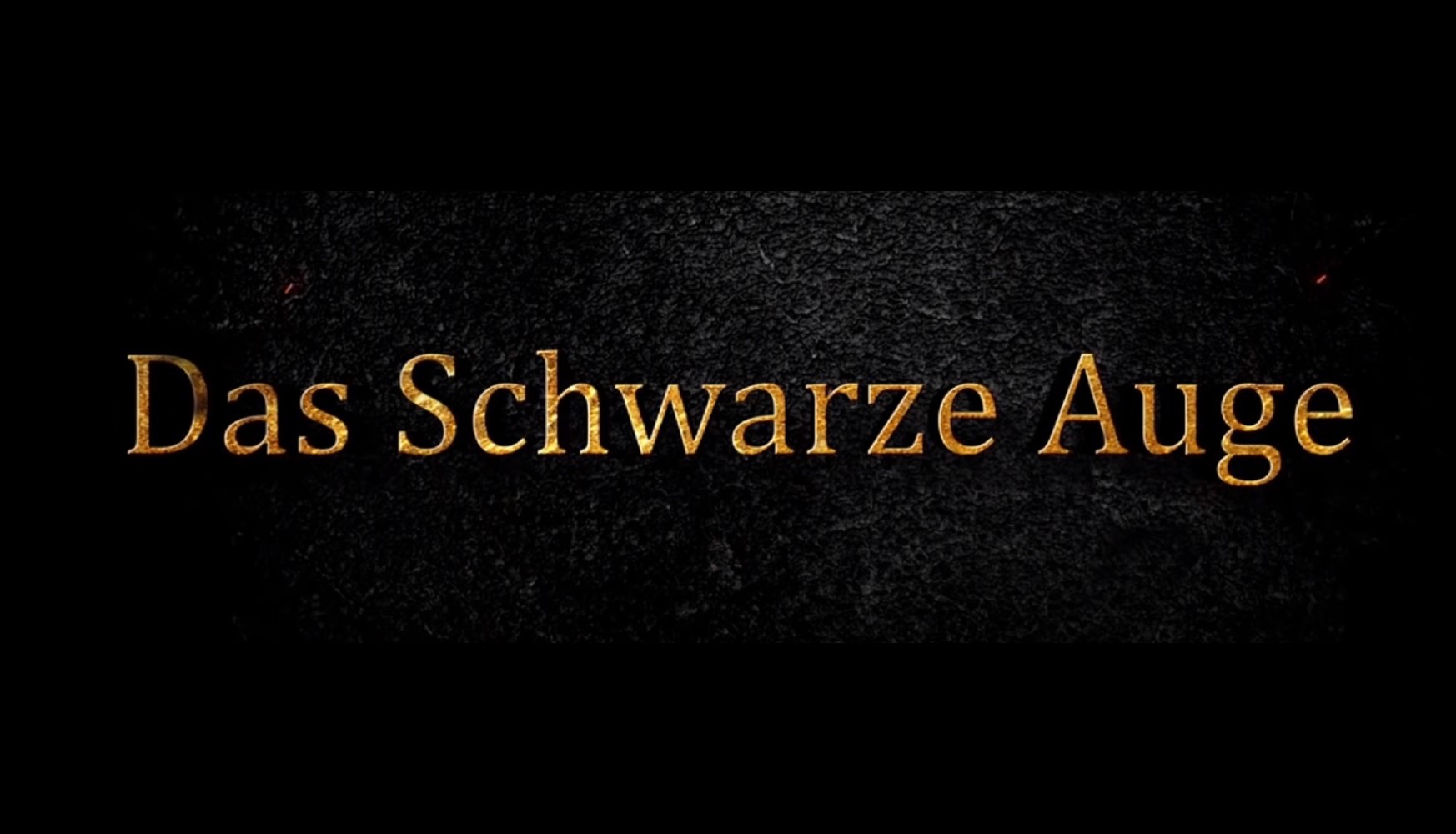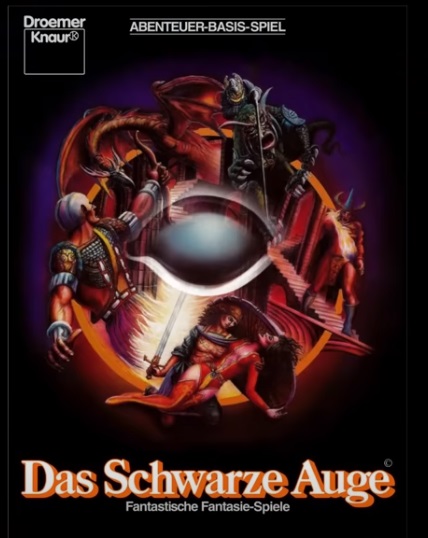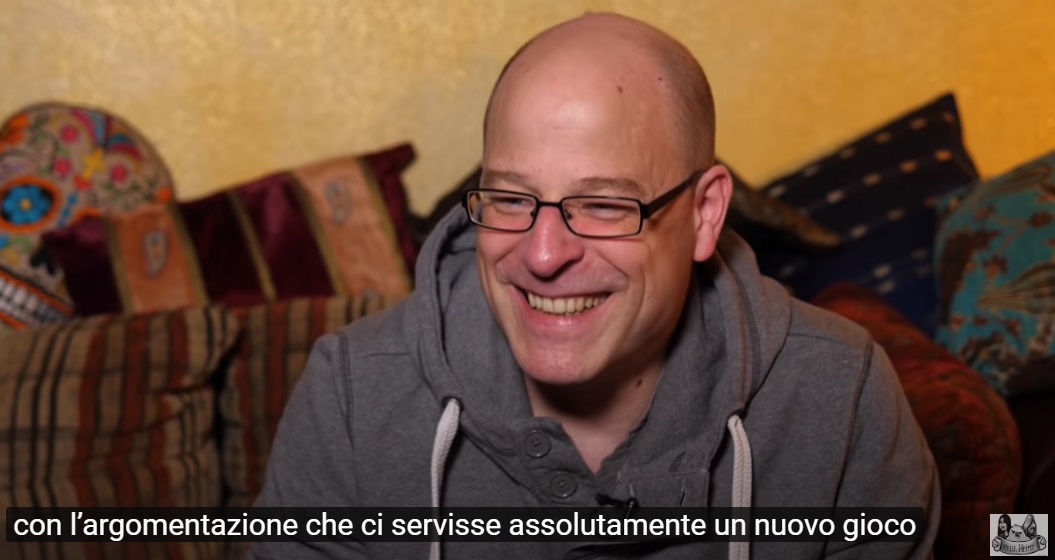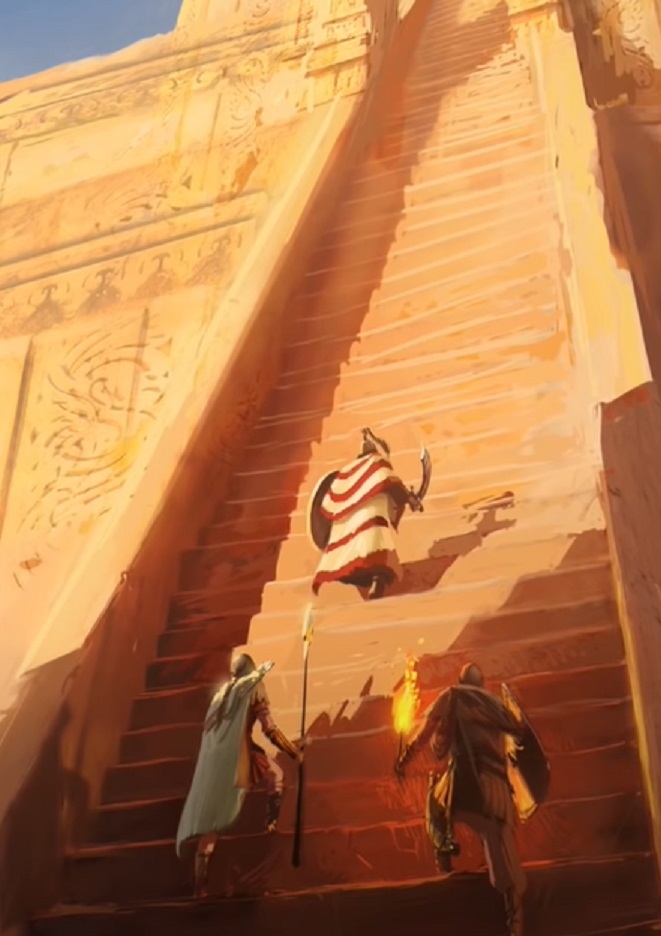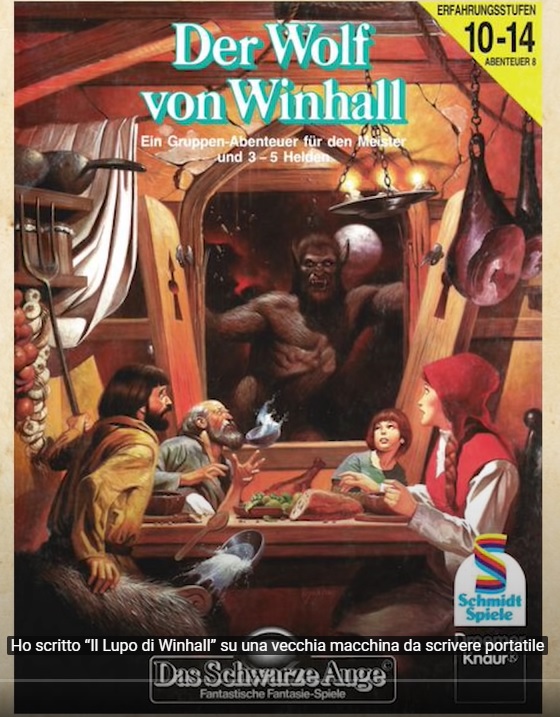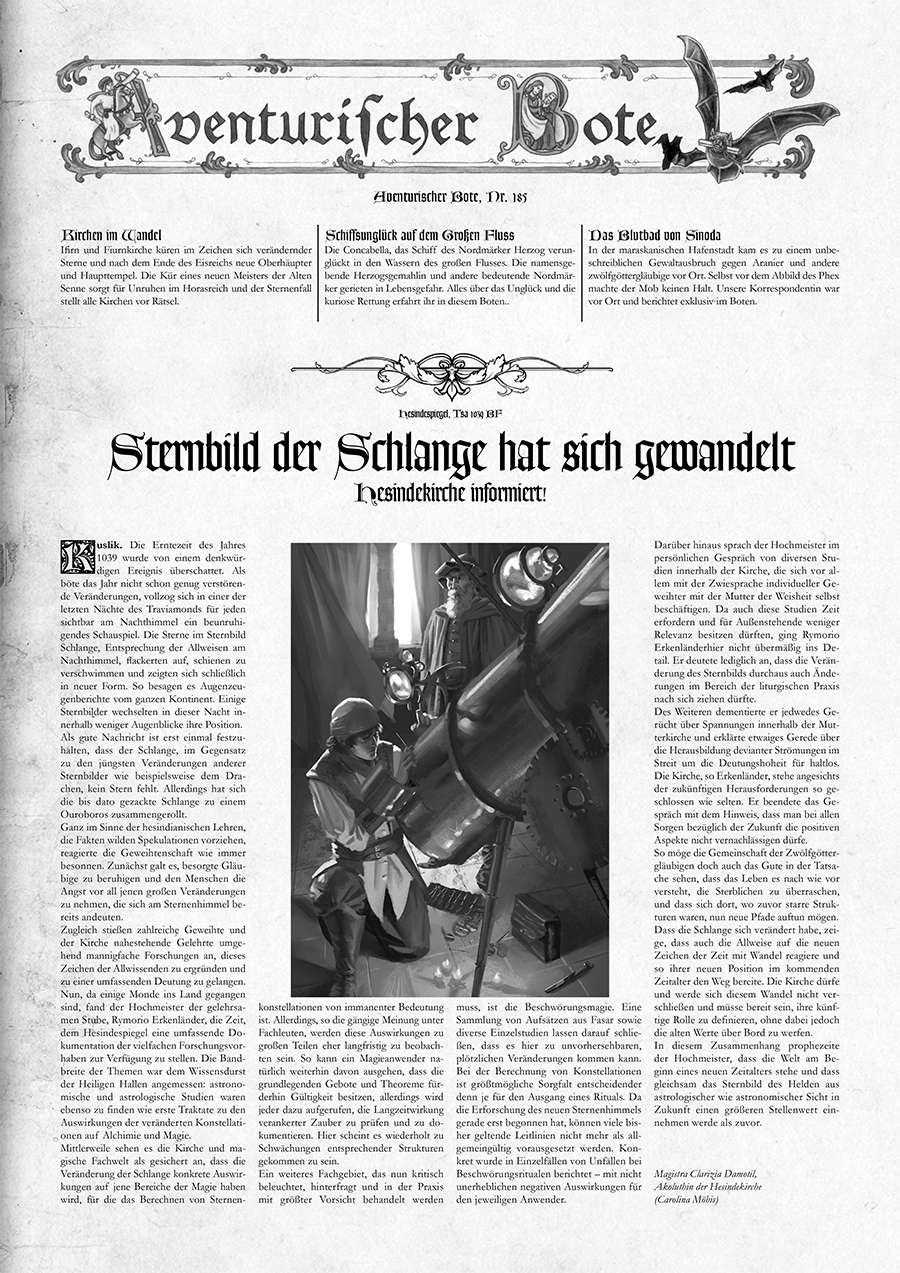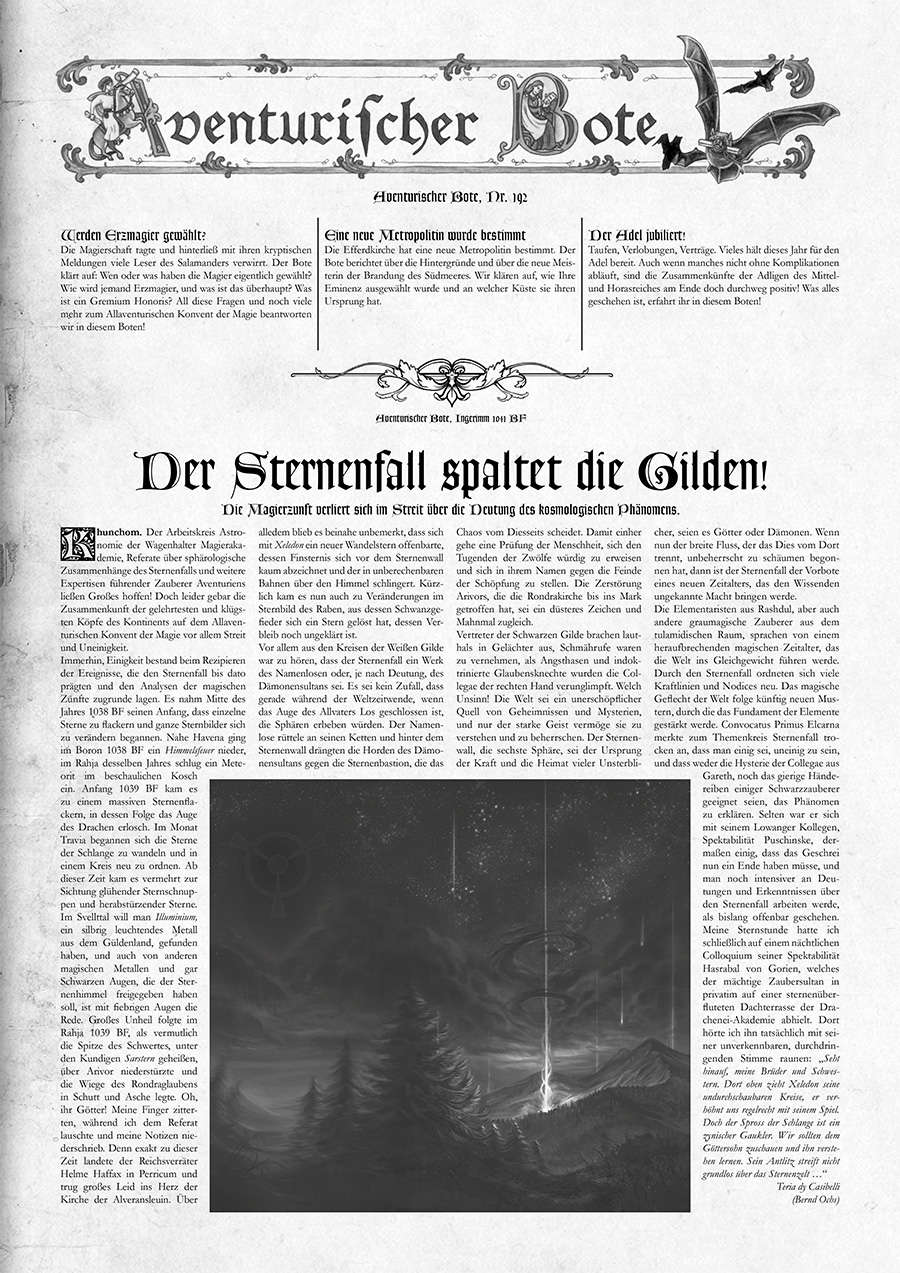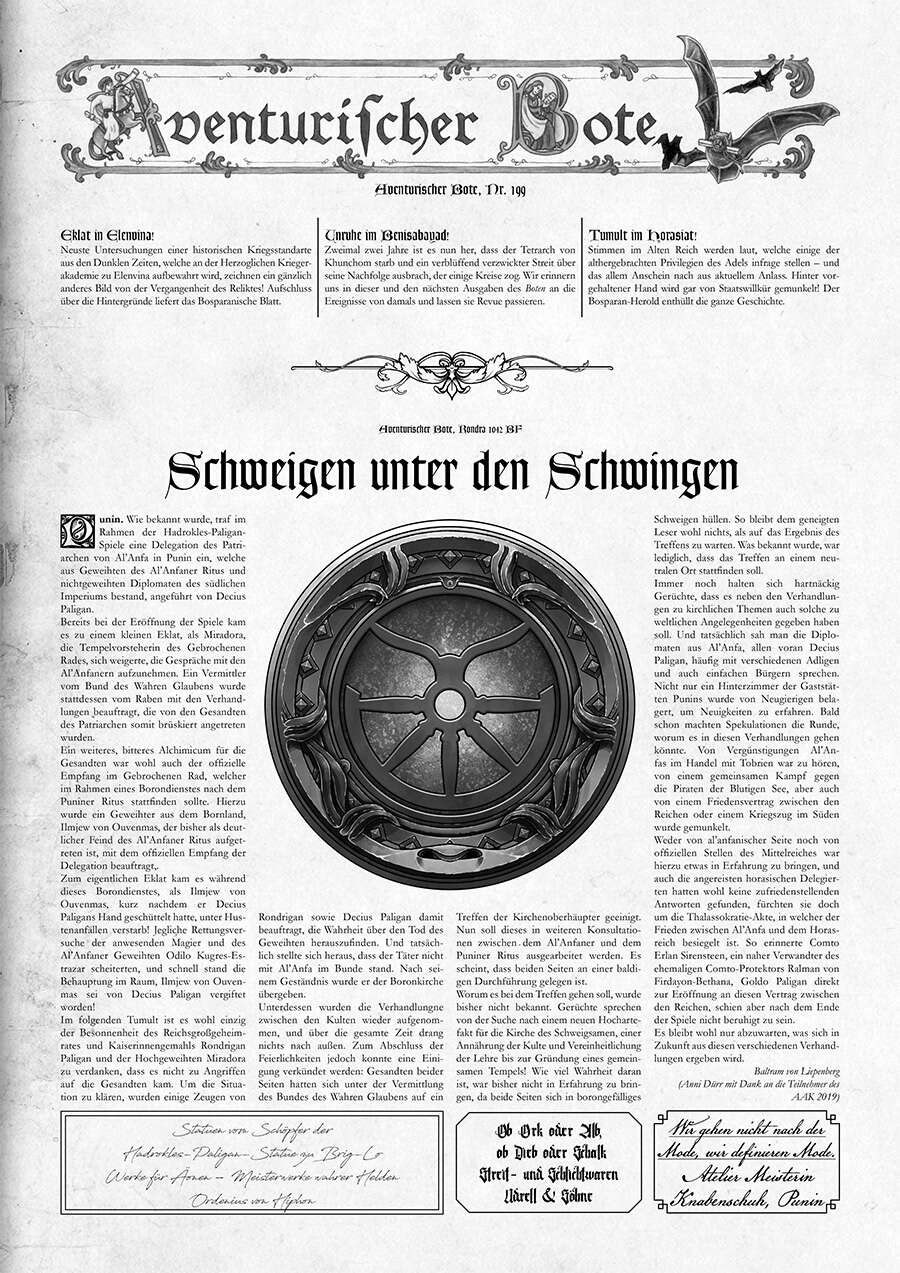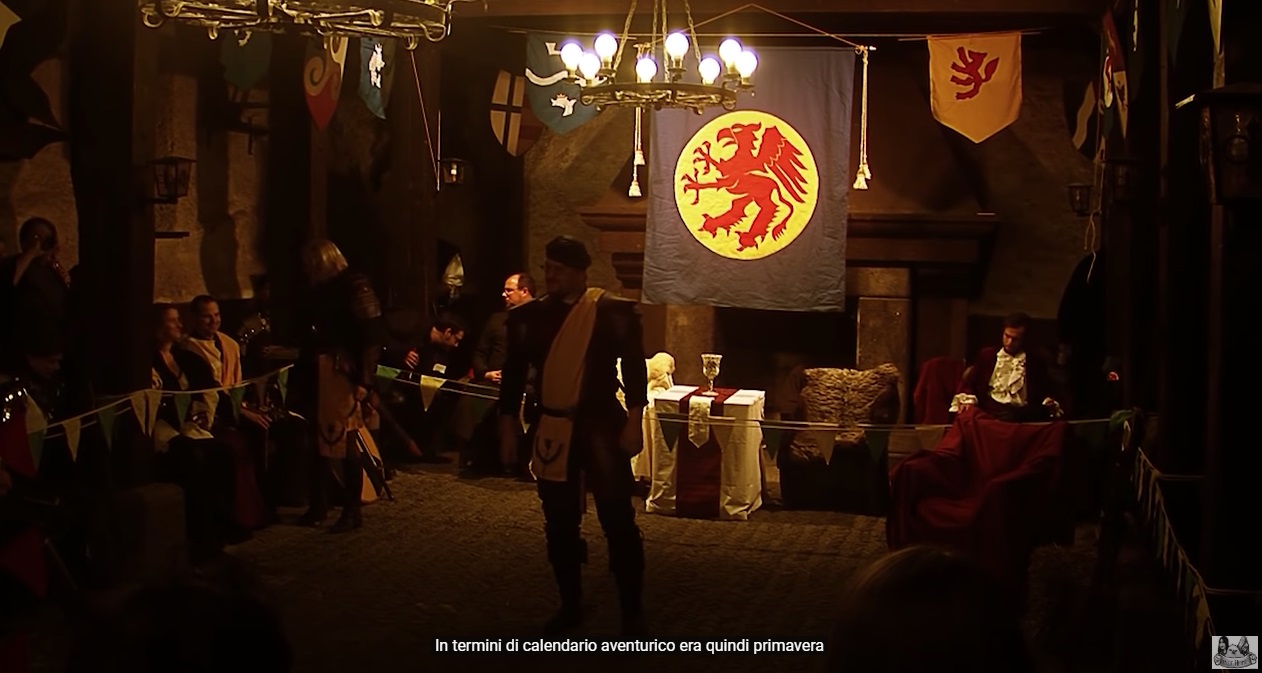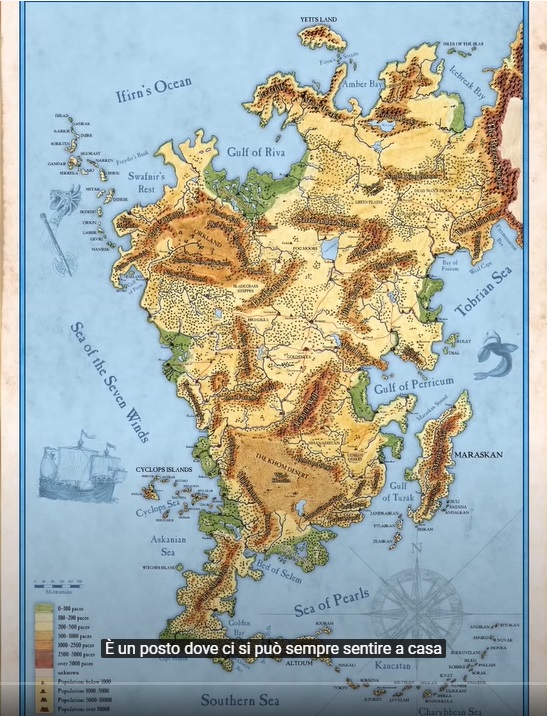Today, thanks to Das Schwarze Auge or, as it is known in English language, The Dark Eye, we make a great leap into the past. I have the opportunity to tell you a story that for older readers will have the taste of memory, for others I hope it will be a pleasant read and a trigger for some thoughts.
Das Schwarze Auge is a classic fantasy role-playing game, one of the first to appear and still the most successful German roleplaying game. Everything I’m writing and the images used were taken from a video documentation made by Orkenspalter TV: Das Schwarze Auge: Hinter der Maske des Meisters (“The Dark Eye: Behind the Mask of the Narrator“). It is visible on Youtube, divided in four parts of which the first three subtitled in English. I discovered it thanks to the Kickstarter project by the Italian team La Compagnia delle 12 Gemme, who will create an Italian localization of the fifth edition of Das Schwarze Auge.
It was in the year…
Done with the necessary premises, we can start with the real story. It’s 1984. The year Apple is introducing the first Macintosh series computer. Year in which the second season of Stranger Things takes place. The year in which the first great German roleplaying game, Das Schwarze Auge, landed in game stores.
For kids in the 80s, roleplaying games were something new and mysterious. But unlike their modern counterparts there were no previous generations ready to present or review them, or forums within the reach of a smartphone. There was only one box in a shop window or a flyer with the list of available manuals advertising the game. For some of them, the 8-page flyer featuring Das Schwarze Auge became the basic manual through which they not only imagined their adventures, but also imagined what the game or rules might look like.
Let’s stop for a moment to think about that world in which the telephones were on a table in the living room attached to a cable, in which the television had few channels and the offers for young people were only in certain times. Without posts, streaming, youtubers, chats and forums. The fantasy worlds were only in books or in each person’s fantasy. What huge impact could have a shareable but customizable imaginary world made of books, manuals, maps and ideas?
Immortal love
If the first encounter with roleplaying games still attracts millions of people of all ages and in every part of the world, imagine what effect it had on children who belonged to the first generation of fans.
Tomas Finn, who has become a novelist, screenwriter and author of Das Schwarze Auge, remembers his first encounter with role playing in this way:
We talk about a game based only on fantasy, without the elements of a board game. I could not have imagined it in the least, but it exerted such a charm on me … I can’t say why, it was a kind of magical attraction. I forced my brothers to give me 10 marks of their weekly pocket money with the argument that we absolutely needed a new game!
I still remember that afternoon, I should have studied for a Latin homework. But that day, until late in the evening, I read the books and came to the conclusion: “Oh God, this is a whole new world!”. I had found the meaning for the rest of my life.
Tomas Finn, author of Das Schwarze Auge
Das Schwarze Auge: the origins
But how was Das Schwarze Auge born? The origins are quite funny. The two future authors Werner Fuchs and Ullrich Kiesov, already in games and books milieu, were contacted by TSR, the previous publishing house of D&D, which in 1982 already had a turnover of 25 million dollars. Gary Gigax and his companions needed someone to sell Dungeons and Dragons in Germany. Made the first agreements, Fuchs and Kiesov received the red box and fell in love with the game. In 1983, negotiations began for the contract with TSR, having also found a publishing house, Schmidt Spiele.
Except that TSR wanted 24% of the royalties. Then Schmidt Spiele replied a strong “no”, saying that they would have produced their own game with which they would sweep them away from the German market. In exchange for a hefty compensation, Fuchs and Kiesov had to create in less than two months (in time for the Nuremberg Fair in 1984) a roleplaying game with which getting rid of D&D. In that short span of time they created the basic box with the rules and four adventures.
The war with TSR was taken seriously by Schmidt Spiele, who hired an advertising agency that, in addition to also producing television commercials, took the right to change the name of the game from Aventuria to the current Das Schwarze Auge, literally translatable with The Black Eye. Maybe in the hope of doing the same to the opposing RPG.
It’s not D&D
One of the key point was not taking so much inspiration from D&D to avoid the accusation of plagiarism, since they weren’t on good terms. It is for this reason that in Das Schwarze Auge the d20 is used but to succeed it is necessary to roll low, or that there is no armor class, or that many of the terms used are particularly distant from those of D&D, even if a little counterintuitive.
In the future, other differences will also prove to be small but fundamental details. For example, due to the more permissive German environment, it was possible to create more provocative covers, showing naked breasts (we still talk about attracting kids in the 80s). At the same time, some of the themes presented in the game also benefited from this greater freedom. But the big difference between these two games was the incredible close relationship between authors, players and the development of the world. In any case we will get there later, for now the world of Aventuria was just a name. Let’s go back to history.
First steps
It was a success. In 1984 they sold 100,000 copies of the base box and around 50,000 copies of each adventure. In total, the first box sold 250,000. The time had come to give shape to the setting, still to be built. So far there has been more quantity than consistency. Of the four published adventures of the new fantasy roleplaying game, two were almost science fiction and one set on another planet. There was even a nuclear reactor under the fortress of a demon lord. The publishing house itself was not clear about what it was producing, having also included an improbable carnival mask in the narrator’s box.
It was the epoch of the birth of the roleplaying game after all, and there was still no predetermined genre. It was the creativity and personal tastes of the first authors that defined the collective imagination that we still carry with us now.
In 1984 everything had been done so quickly that much had yet to be decided. Suffice it to say that to save time the two authors drew the map of the continent of Aventuria simultaneously, with two pencils. While one drew the east coast from north to south the other drew the west coast in the opposite direction. But a new world was born, destined to grow and expand enormously. And from here our story moves towards the users of all those basic boxes scattered throughout Germany and beyond.
How an author is born
For example, we can move to Salzburg, in a small game shop, where a young man named Hadmar, after a careful evaluation between a well-known red box (D&D) and a black one (Das Schwarz Auge), chose the second one. And immediately he thought “I can do better! I have to send something!” and so he got in touch with the publishing house, as he himself says:
I put myself into a creative trip by writing 60 pages of description for a city […] trying to demonstrate that a fantasy world does not necessarily have to be based only on rules and equipment, but on figures, characters, stories, conflicts, things of that kind. Then, a couple of weeks later, a letter arrived from Ullrich Kiesow […]: “The material is great! Unfortunately we have just published a city, but your material is much better than ours! Would you like to come to Dusseldorf? “
[…] But I also dealt with it at an amateur level, none of us had any specific training, including Kiesow, who was “just” a teacher, in practice we had to learn on the field.
Hadmar Von Wieser,author of Das Schwarze Auge
Little authors grow
The need for new authors continued to grow and efforts were made to recruit them among the ranks of the players. In the absence of forums, social media, email, instant messaging and so on, a hierarchical organization of storytellers and managers was established on a regional basis; in short, it was the dawn of Community Management.
The young players sent their material to the regional manager and through the central editorial staff to the game editors. Or they sent questions about the game and the setting denoting the desire to expand knowledge of the continent of Aventuria. Sometimes it was Ullrich Kiesow himself who replied, sending suggestions or material, even unpublished, which momentarily appeased the desire for novelty but on the other hand fueled the fire of passion for the game. And from that group of enthusiasts was born the autoral group that carried on Das Schwarze Auge in the following years.
Many started through the fanzines, making themselves noticed and attracting the attention of Kiesow, who, coming into contact with the most talented, commissioned the writing of some adventures. It was a period in which they were still trying to understand how to write an adventure, in which they began to consider that there was not necessarily a dungeon or a linear plot development.
One of the first acknowledgments of a future author’s value, as well as a great personal satisfaction, was to be published on…
Aventurischer Bote
In 1981 the Midgard roleplaying game was the first attempt to copy D&D in Germany. One of the great innovations it brought was that, for the first time, what the promoter group played became publication. Das Schwarze Auge took this formula and implemented it thanks to its success. A bimonthly publication called Aventurischer Bote was created, which through a journalistic cut told the evolution of the history of Aventuria. An evolution that also took into account the contributions of individual players.
What in a loft of a small German village had made a group of teenagers vibrate with emotion during a game session could become an event recognized by the whole gaming community. A year in the world of Aventuria corresponded to a year in reality. A person could follow the events of characters or entire regions as if we were talking about a real world, alive. And it was expected as a newspaper, waiting for the latest news, without notifications, updates, previews or trailers.
Thanks to the Aventurischer Bote, the adventure-exchange circles were born. Each persone wrote an adventure, made 10 copies and sent them to the club and in return received 10 more adventures from other members. It was something alive, romantic and I think about it with a little envy for not having had the chance to experience it firsthand.
An asways more interactive Das Schwarze Auge
In 1988 the “game by mail” (how strange does it feel reading “game by mail” in 2020?) of Aventuria began. Through the game the politics of the Middle Empire developed thanks to the contribution of the players, who could apply to obtain the role of barons or dukes becoming vassals of the editorial staff. This initiative also led to the recruitment of new authors and the creation of unique details. The players exchanged letters as if they were written by their characters, invented events related to their barony, interacted through politics or waged war. The summary of the main facts was published in the Aventurischer Bote and everything culminated in the annual “Panventuric Convent” at the Bilstein Castle. A convention and a play-by-forum, something established now, but a milestone in the development of our current role-playing culture set in the 80s and 90s.
The end of our journey, but not of Das Schwarze Auge.
Here is the ending of the tale of an era that no longer exists.
The story of Das Schwarze Auge obviously continues. It reached its most successful period in the 1990s, making the concept of roleplay known to all of Germany. At that time, two boxes and 10-12 adventures were published per year, a production volume that even D&D could not match. Now we are at the fifth edition of the game, the one that is about to land in Italy too.
The greatest advantage recognized was that of having created a vast and detailed continent, varied and likely, where each player can have his own favorite place. A world in constant evolution that for decades has been lovingly filled with details by an innumerable group of authors who have taken the first steps inside it as children. It is a living world, which still honors the legacy of its origins, evolving thanks also to the contributions of the players who get in touch with the editorial staff.
For this reason, La Compagnia delle 12 Gemme insists on how much it is worth diving at least once in Aventuria. And when my copy of the Italian version of Das Schwarze Auge will arrive and I will be able to read the first issue of the translated Aventurischer Bote, I will do it with in my mind the whole story behind it and in my heart the emotion of a teenager who for the first time discovers an immortal love.

